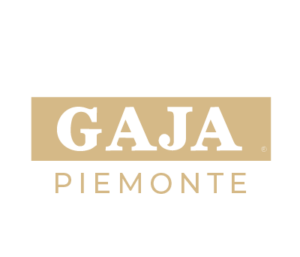
Founded in 1859 by Giovanni Gaja, the Gaja family arrived from Spain during the 19th century. At that time, the Gaja family opened a tavern in Barbaresco, serving their wines with food and by the end of the 19th century, Gaja wines are bottled and supplied to the Italian army in Abyssinia.
In 1937, Giovanni Gaja is the first to put the name Gaja in large red letters on the labels of the jars. The company progresses after World War II when Giovanni Gaja makes a large series of vineyard purchases in terms of scale and wine quality.
In 1994, his great-grandson and current owner, acquired the historic Pieve Santa Restituta in Montalcino, and in 1996, the family also acquired the Ca ‘Marcanda estate in Bolgheri, both in the Tuscany region.
Barbaresco
The emblematic wine of the Gaja estate. It is a 100% Nebbiolo wine from 14 different areas of Barbaresco vineyards and has 12 months of barrel aging and another 12 months in oak barrels.
The garnet color of the wine has a good intensity, the aromas are typical, linear and elegant, with notes of licorice, tobacco, and violet, as well as smoked nuances only visible in the background.
In the mouth, the sensation is harmonious, with an almost salty acidity well controlled by the extracts.
The tannins are just a little dusty and distinct thanks to the relative youth of the wine and it’s easy to see how it will improve with another three years of bottle. The end has a good persistence without any bitterness.
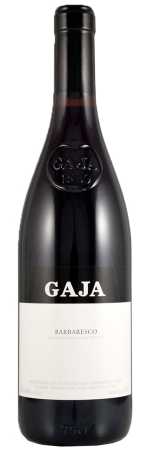
14,5
14-16º
Nebbiolo
Gourmet dishes such as mushrooms
Costa Russi
The only vineyard acquired by the Gaja family in 1967. The name comes from the term “coast”, the side of a hill facing the sun, and “Russi”, a nickname of the previous owner.
The distribution of the grape variety is 95% Nebbiolo and Barbera, with 12 months in barrels and then 12 months in large oak casks.
With a dazzling fragrant aroma and palate, savory flavors with hints of black cherry in the background.
A good finish, beautifully intertwined and balanced.
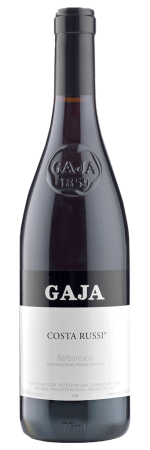
14,5
14-16º
Nebbiolo and Barbera
Game dishes such as duck, goose or pheasant
Sorì Tildìn
A beautifully balanced wine with dark cherry flavors and a damnating undertone.
A less extravagant offer from Gaja that will please those looking for more subtle flavors.
The tannins have velvety texture and the flavors are distinctly Italian.
Red color, balanced, and very full-bodied.
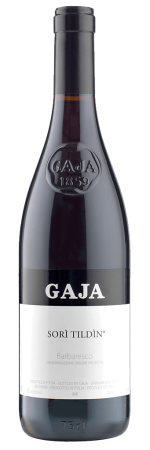
14,5
14-16º
Nebbiolo and Barbera
Game dishes such as duck, goose or pheasant
Sorì San Lorenzo
This is a delicious Gaja, full of savory flavors accented by suggestions of mushrooms, plums, and cherries.
As expected, the tannins are firm but rounded with a velvety and silky texture.
This wine has a good complexity and an excellent balance.
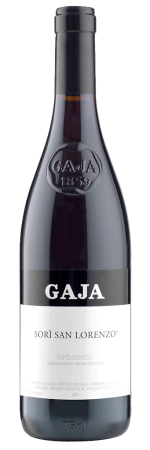
14,5
14-16º
Nebbiolo and Barbera
Game dishes such as duck, goose or pheasant
Sperss
The word “Sperss”, which means “nostalgia” in the Piedmont region, was an appropriate term for Angelo Gaja’s eagers to return to Barolo’s production in 1988 using the grapes grown on his property after years of absence.
Incredibly young and polished, Sperss is a modern Nebbiolo that has the quality of the traditional Barolo being long-lasting and quite tanic and closed even at the age of 15.
The wine is just starting to open, offering blackberries, notes of black truffles and hint of roses.
An impressive and sophisticated wine.
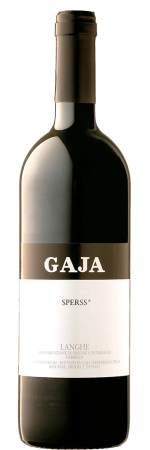
14,5
14-16º
Nebbiolo and Barbera
Game dishes such as duck, goose or pheasant
Conteisa
Piedmont dialect for “fighting”, the name of this wine pays homage to the historical dispute between the communes of La Morra and Barolo for possession of the Area of Cerequio.
While Sperss is generally deeper and more austere, this Conteisa has a nose full of floral and delicate notes, very fresh and aromatic.
On the palate reveals sweet wild cherries and delicate aromatic herbs, a voluptuous body and a harmonious and balanced texture of tannins.
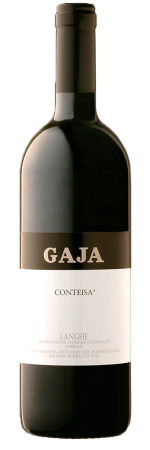
14
14-16º
Nebbiolo and Barbera
Dishes of roast meats and thick game
Darmagi
Planted in 1978, the name means “what a waste” or “pity!”, and is said to be the reaction of Giovanni Gaja, father of Angelo Gaja, on the vines of Bordeaux varieties planted in Barbaresco.
Despite its well-defined varietal character, this wine has a precise personality due to the Barbaresco soil that emphasizes its initial austerity, resulting in a refined and complex wine.
It has a dark color, with spicy aromas of paprika, licorice, cassis and flowers, especially violet.
This wine has a remarkable structure, with refined tannins.
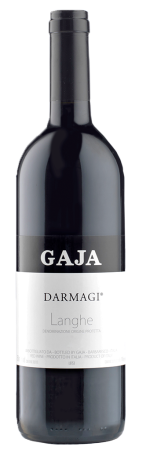
14,5
14-16º
Cabernet Sauvignon, Merlot, and Cabernet Franc
Meat dishes such as goat
Gaia & Rey
It is a wonderfully pure Chardonnay, with a minerality intertwined with silky and elegant tannins. The French oak needs some time to incorporate into the wine but it is still an extraordinarily beautiful and refined Chardonnay of remarkable pedigree.
Straw-colored, has a rich nose, with notes of toast and vanilla, as well as citrus aromas.
On the palate presents a body filled with concentrated fruit, ripe, and balanced by a lively acidity.
Long and persistent finish.
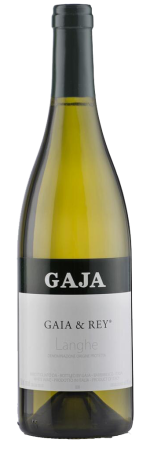
14
10-12º
Vermentino and Grechetto
Pasta dishes, risottos, fish, and shellfish
Sito Moresco
The name derives from Moresco, the former owner of the Pajorè vineyards, acquired in 1979. Sito Moresco combines the complexity of the Nebbiolo variety with the surroundings of Barbera and the body of Cabernet Sauvignon and Merlot.
The wine has a refined bouquet of small red fruits. In the mouth it is elegant, fruity, and harmonious.
Fresh finish with soft tannins making the wine suitable for drinking immediately, but also to store.
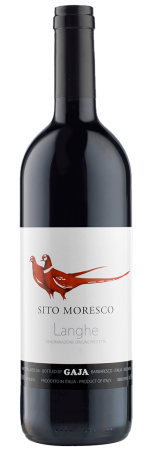
14
14-16º
Nebbiolo, Barbera, Merlot, and Cabernet Sauvignon
Game dishes such as duck, goose or pheasant
Dagromis
Serralunga’s power and la Morra’s elegance give rise to this captivating Barolo. With the expression of two large terroirs of Barolo, La Morra and Serralunga, Dagromis combines small nuances of red fruits with intense floral and balsamic notes.
The structure in the mouth is well defined. It has exceptional aging potential.
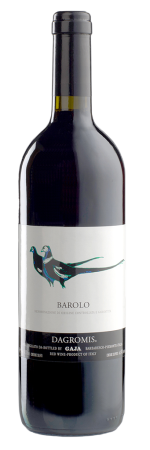
14
14-16º
Nebbiolo
Meat dishes like goat
Rossj-Bass
The grapes come from different vineyards, including the Rossi vineyard, named by Lucia and Angelo, dedicated to their second daughter, Rossana.
Nose with notes of white and citrus flower and a touch of honey. Strong character, good acidity, fresh and persistent finish.
Good bottle aging capacity.
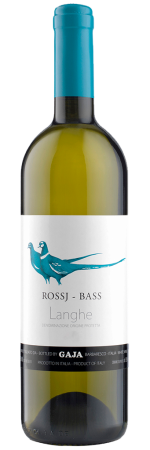
14
8-10º
Chardonnay and Sauvignon Blanc
Fish dishes and Asian food
Alteni di Brassica
The name comes from Alteni, small stone walls that once surrounded the grounds; and Brassica, yellow flowers growing in the vineyards in spring.
On the nose, well-defined fruity notes (grapefruit, papaya, and pear) with fruity and spicy nuances. Balanced body and structure defined in the mouth supported by great freshness.
Excellent aging capacity.
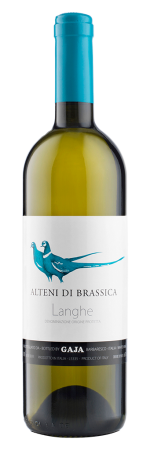
14
8-10º
Sauvignon Blanc
Pasta dishes, risottos, fish and shellfish
